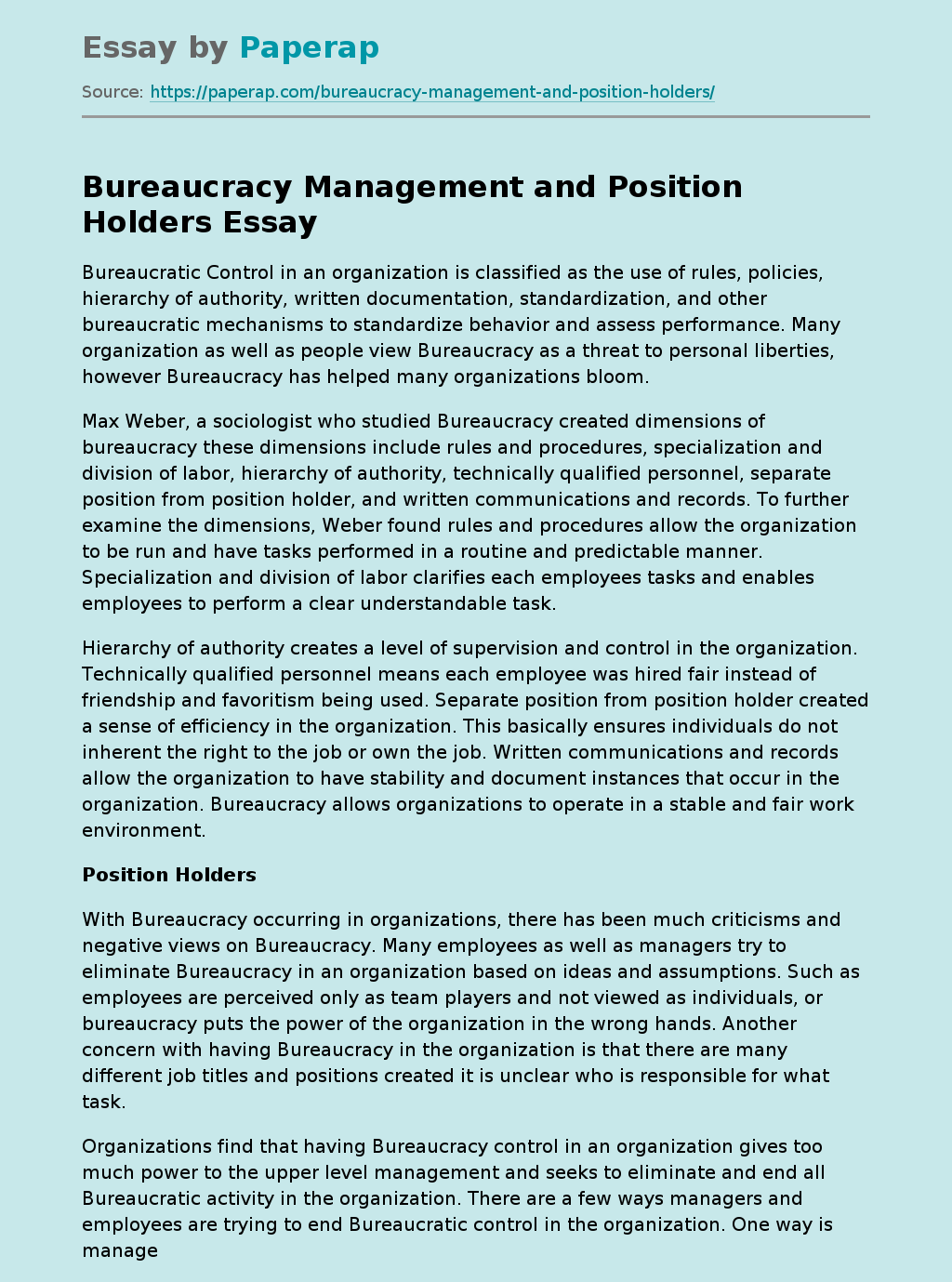Bureaucracy Management and Position Holders
Bureaucratic Control in an organization is classified as the use of rules, policies, hierarchy of authority, written documentation, standardization, and other bureaucratic mechanisms to standardize behavior and assess performance. Many organization as well as people view Bureaucracy as a threat to personal liberties, however Bureaucracy has helped many organizations bloom.
Max Weber, a sociologist who studied Bureaucracy created dimensions of bureaucracy these dimensions include rules and procedures, specialization and division of labor, hierarchy of authority, technically qualified personnel, separate position from position holder, and written communications and records.
To further examine the dimensions, Weber found rules and procedures allow the organization to be run and have tasks performed in a routine and predictable manner. Specialization and division of labor clarifies each employees tasks and enables employees to perform a clear understandable task.
Hierarchy of authority creates a level of supervision and control in the organization. Technically qualified personnel means each employee was hired fair instead of friendship and favoritism being used.
Separate position from position holder created a sense of efficiency in the organization. This basically ensures individuals do not inherent the right to the job or own the job. Written communications and records allow the organization to have stability and document instances that occur in the organization. Bureaucracy allows organizations to operate in a stable and fair work environment.
Position Holders
With Bureaucracy occurring in organizations, there has been much criticisms and negative views on Bureaucracy. Many employees as well as managers try to eliminate Bureaucracy in an organization based on ideas and assumptions.
Such as employees are perceived only as team players and not viewed as individuals, or bureaucracy puts the power of the organization in the wrong hands. Another concern with having Bureaucracy in the organization is that there are many different job titles and positions created it is unclear who is responsible for what task.
Organizations find that having Bureaucracy control in an organization gives too much power to the upper level management and seeks to eliminate and end all Bureaucratic activity in the organization. There are a few ways managers and employees are trying to end Bureaucratic control in the organization. One way is managers are now allowing lower level employees to make decisions in the organization and just overall have a voice in the organization.
Another way includes having corporate offices of an organization be staffed lightly to reduce the amount of power upper management has. Another reason many organizations and employees are against bureaucracy is because many employees are formally educated and organizations believe these people do not need the strict rules and guidelines because with them being highly educated, they will become great workers which will need limited guidance (Daft 342-360). Daft, Richard L. Organizational Theory And Design, 10th ed. West Publishing 2010.
Bureaucracy Management and Position Holders. (2019, Dec 05). Retrieved from https://paperap.com/bureaucracy-management-and-position-holders/

